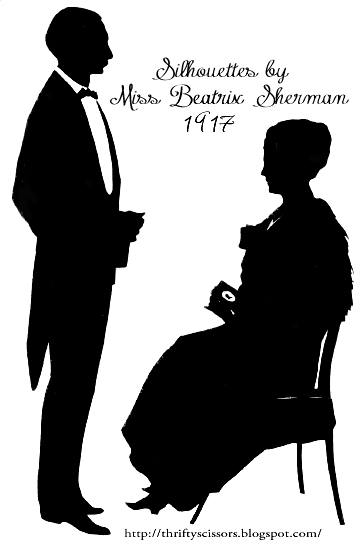Showing posts with label paper cuts of portraits. Show all posts
Showing posts with label paper cuts of portraits. Show all posts
Saturday, January 11, 2014
Thursday, March 21, 2013
Paper Cutting Patterns by Auguste Edouart
 |
| Ad from New York Tribune, 1913. |
"Born in Dunkerque,
he left France in 1814, and established himself in London, where he
began his career making portraits from hair. In 1825, he began work as a
silhouette portraitist, taking full-length likenesses in profile by
cutting out black paper with scissors. Edouart spent fifteen years
touring England and in 1829 arrived in Edinburgh. He remained there for three years, during which time he produced some five thousand likenesses." Edouart travelled in the United States ca.1839-1849, visiting New York, Boston,
and other locales. He later returned to France where he worked on
smaller silhouettes. They included one of the most notable writer of
this period, Victor Hugo.
Old Silhouette Present To Taft
Paper Likeness of President Tyler Made by Artist Edouart in 1841.
Washington, June 28. --Mrs. E. Nowell Jackson, related to President Tyler, has presented to President Taft the original silhouette portrait of President Tyler, made by the artist, Auguste Edouart, in Washington, in 1841. It will be placed in the White House collection of presidential portraits.
Mrs. Jackson has always been interested in silhouettes, the old black profile portraits of the eighteenth century.
Six years ago she picked up a rare treatise on the art written by Auguste Edouart, a Frenchman, who toured in Great Britain and the United States, and cut the picture in black paper of every king, queen, princess, president and senator in any town he visited.
 |
| I've restored the silhouette to a facsimile from the very tiny version you see in a photo scan of the original newspaper. |
- WorldCat. Edouart, Augustin-Amant-Constant-Fidèle 1789-1861
- Smithsonian. Auguste Edouart Self-Portrait, 1843
- Flickr. Portrait by Edouart of Sarah Josepha Buell Hale (1788–1879)
- Library of Congress. Silhouette profile of artist Charles Fenderich, by Edouart
- Flickr. Work by Edouart
- Flickr. Silhouette in clasp of velvet choker
Thursday, February 28, 2013
The Civic Ball In Silhouette, 1917
Friday, December 14, 2012
Subscribe to:
Comments (Atom)





